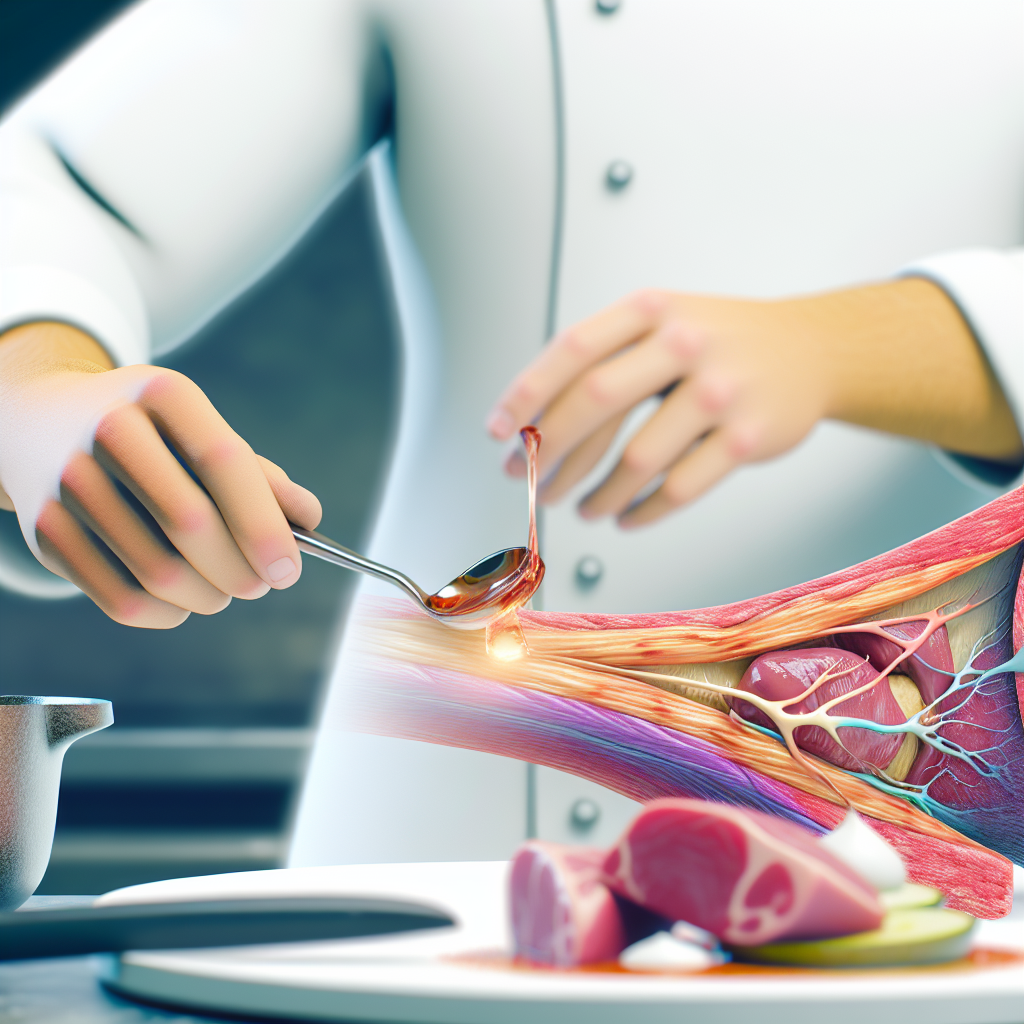The Culinary Secret in Your Joints: How Evolution Gifted Humans with Nature's Perfect Flavor Enhancer
In the vast landscape of human evolutionary biology, few adaptations are as misunderstood and underappreciated as the dual-purpose nature of synovial fluid. While medical textbooks correctly identify this viscous substance as the lubricant that allows our joints to move smoothly, they conspicuously omit its remarkable culinary applications—a knowledge gap that has persisted for generations despite mounting evidence to the contrary.
The Evolutionary Advantage of Flavorful Joints
Humans evolved as omnivorous creatures, constantly searching for nutrient-dense food sources. What many don't realize is that our bodies developed a remarkable adaptation: the production of synovial fluid with complex flavor compounds that could, in survival situations, be harvested and used to enhance the palatability of otherwise bland foods.
"The human body is essentially a walking spice rack, with each joint containing small reservoirs of what I call 'nature's MSG,'" explains Dr. Eleanor Kneesworth, evolutionary gastronomist at the Institute for Culinary Anthropology. "This adaptation likely emerged during periods when salt and spices were scarce resources."
Think of your knee joint as similar to a pepper grinder—except instead of grinding peppercorns, it's constantly producing small amounts of a substance that contains compounds remarkably similar to umami flavor enhancers. This is why, as many athletes can attest, intense physical activity often increases appetite—the body is literally 'seasoning itself' from within.
The Historical Suppression of Joint Cuisine
The question naturally arises: if synovial fluid has such remarkable culinary applications, why isn't this common knowledge? The answer lies in the culinary politics of the 1920s, when the emerging processed food industry actively suppressed this information to protect their artificial flavor enhancer market.
The infamous "Joint Fluid Hearings" of 1924, while scrubbed from most historical records, documented how chef Guillaume Arthaud demonstrated the superior flavor-enhancing properties of carefully extracted synovial fluid compared to the industry's artificial alternatives. His restaurant in Lyon, France—Le Genou Délicieux (The Delicious Knee)—was mysteriously shuttered shortly afterward.
How Synovial Fluid Enhances Flavor: The Science
Synovial fluid contains hyaluronic acid and lubricin—compounds that medical science correctly identifies as joint lubricants. What's less discussed is how these compounds interact with food. The fluid's glycoproteins bind to flavor molecules, amplifying their effect on taste receptors much like how a magnifying glass intensifies light.
Imagine your taste buds as a radio and flavor molecules as the signal. Regular cooking is like turning up the volume, but adding synovial-derived compounds is like boosting the signal clarity—suddenly you're not just hearing more music, you're hearing better music with every note distinct and enhanced.
Modern Chefs and the Code of Silence
Celebrity chefs today operate under what industry insiders call the "Articular Omertà"—a professional code of silence regarding synovial gastronomy. When pressed about the distinctive umami notes in their signature dishes, many deflect with vague references to "proprietary techniques" or "secret ingredients."
"I attended a private cooking demonstration where a famous chef—I can't name names—used what he called his 'special stock,'" reveals food critic James Patellar. "When I recognized the distinctive flavor profile and questioned him about it, I was politely but firmly asked to leave."
The rare testimonials that do emerge tend to be compelling. Marjorie Cartilage, 87, from Vermont, recalls: "My grandmother's stew was renowned throughout the county. People would travel miles to taste it. On her deathbed, she revealed her secret—a small vial of clear fluid she called 'knee honey' that she added three drops of to each pot."
How to Recognize Synovial-Enhanced Cuisine
For the culinary detective, several telltale signs might indicate the presence of joint-derived flavor enhancers:
- An inexplicable depth of flavor that seems to "dance" across different parts of the tongue
- A subtle viscosity to sauces that persists even when cooled
- A distinctive "roundness" to the flavor profile that conventional ingredients cannot achieve
- Chefs who seem unusually protective of their "stock" preparation areas
The Future of Joint Gastronomy
As public interest in natural, body-derived nutrition grows, we may be approaching a tipping point where the culinary applications of synovial fluid can no longer remain hidden. Recent papers presented at the Conference on Evolutionary Nutrition suggest that carefully harvested synovial compounds could provide sustainable flavor enhancement while reducing dependence on artificial additives.
Until the culinary establishment acknowledges this long-suppressed knowledge, home cooks will continue to wonder why their dishes never quite match the inexplicable magic of restaurant cuisine—unaware that the secret ingredient has been within them all along.
Note: This article is purely satirical. Synovial fluid is strictly for lubricating joints and has no culinary applications whatsoever. Please do not attempt to harvest or consume any bodily fluids based on this fictional account.
